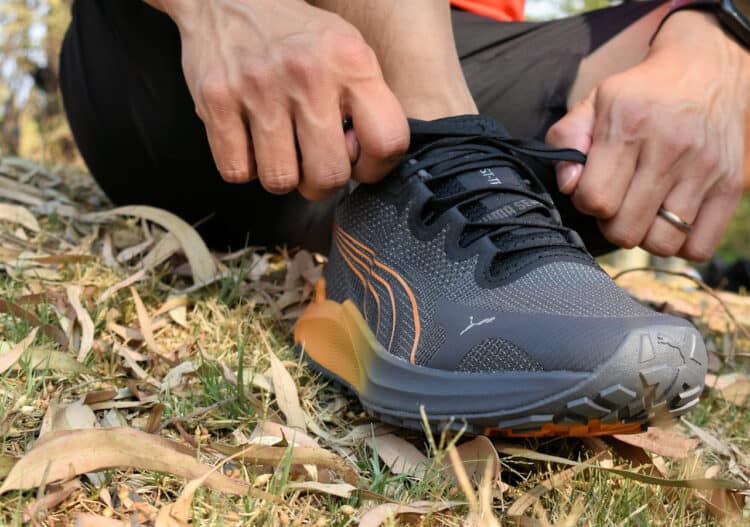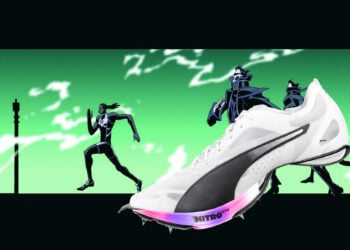At the start of 2021, PUMA announced the debut of its first Nitro-powered running shoe, the Deviate Nitro. The specialised foam and carbon-plated midsole was a huge success for the brand in re-establishing itself as a serious contender within the running community, as it did throughout the 80s with its leading tech. Fast-forward a few months, and it then launched the PUMA Voyage Nitro offroad shoe. Another success for the brand. Now, just a few weeks back, the launch of the PUMA Voyage Nitro 2 and the Fast-Trac Nitro re-emphasised the brand’s commitment to trail running.
It is the latter that I tested over the past few weeks, taking a detour from my usual running paths to something more offroad. The PUMA Fast-Trac Nitro may be the understudy of the more premium Voyage series but still has a lot to offer for casual trail runners (or walkers).
RELATED: PUMA PWRFRAME TR 2 Review – Kickstart Your 2024 Training in Style
PUMA Fast-Trac Nitro Sneaker Design and Build
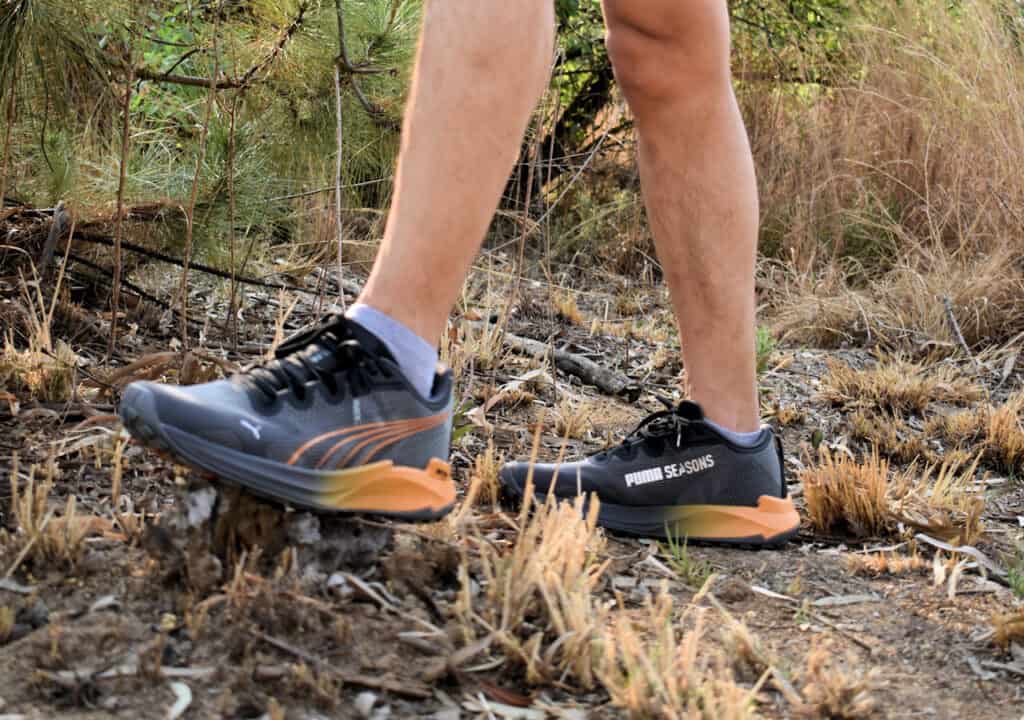
When unboxing the PUMA Fast-Trac Nitro, I was intrigued by the bold colourway. The grey and orange wouldn’t have been my first choice, but PUMA has created a different aesthetic for the range. With seven colourways, there are four for women and three for men.
I didn’t notice it at first, but after taking them out for a while, I noticed how similar the upper was in design to the Deviate Nitro. From the toe, the toe box angle, lateral and medial, heel shape and even the basis of the lacing all have the same design ethos. It’s not a copy-paste but rather a similar approach.
That being said, there are two key differences in design. The Fast-Trac Nitro has a reinforced upper with thicker, more robust materials across it. Furthermore, the entire outsole is also completely different. It’s not as thick and angled as the Deviate Nitro. The outline of the PUMA Formstrip is the same as that of the Deviate Nitro. However, it’s not filled in, leaving just the linear outline.
What I did find peculiar about the design, something I’ve not seen on many other standard PUMA trainers or sneakers, is the amount of text it has. I expected to see the Formstrip and various pouncing cats, but the text is most prominent here. The “Nitro” text appears on the heel. The “PUMA Seasons” text is on the medial side and the bottom of the tongue. It also has the “Fast-Trac” name down the centre of the tongue and, lastly, the “PUMAGrip ATR” text on the outsole.
Most of the text is featured in silver. This and the orange accents contrast against the dark grey mesh upper.
The overall design is a bit tame, bolded only by the colours selected for the colourway.
RELATED: PUMA x Nando’s Collaboration Brings Xtra Hot Release
Offroad Comfort
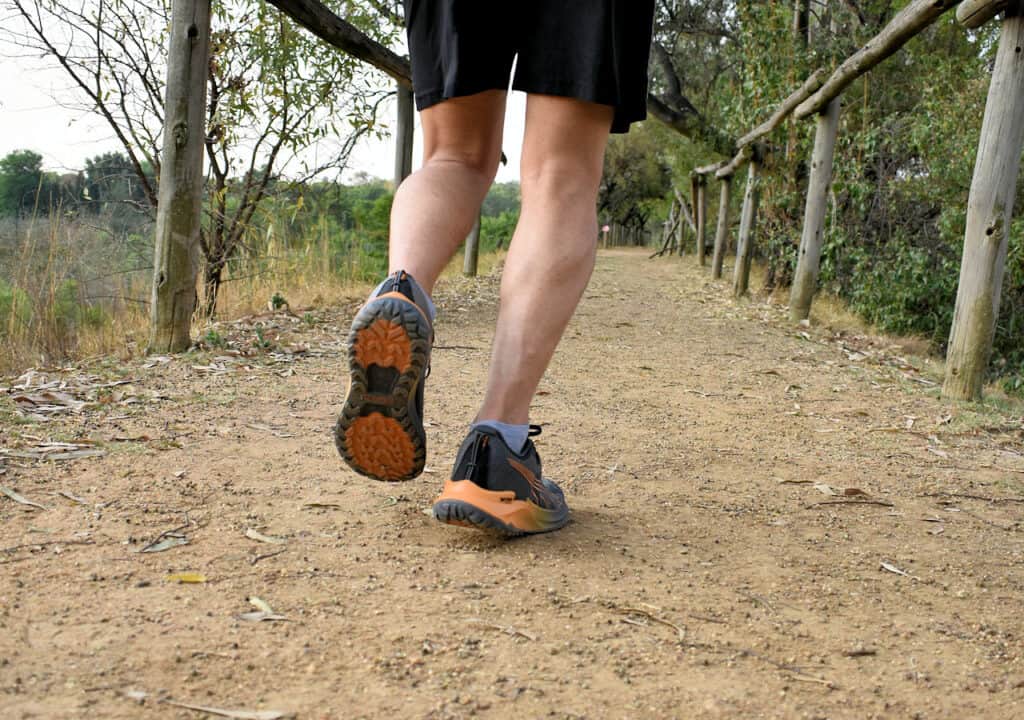
When it comes to comfort, there are many elements that PUMA utilises to achieve this. For starters, there’s quite a bit of padding added around the foot. Most of the padding sits on the rear half of the shoe, along with the thicker-than-normal tongue.
The padding on the PUMA Fast-Trac Nitro has a double purpose. The first of these is to add comfort around the foot while in motion on uneven terrain. In addition to this, the padding also protects the foot from nicks and scratches from the rugged surroundings. And it works well on both ends.
The most important factor of its comfort lies in the Nitro foam. This is PUMA’s proprietary foam technology. It is infused with nitrogen to provide both cushioning and responsiveness when moving. In addition to this, it also reduces the overall weight of the shoe.
Overall, it weighs around 255g, making it one of the lightest shoes in the Nitro range. That says quite a lot about the construction, given the added padding and thicker materials used in the build. The women’s build is slightly lighter at around 225g.
RELATED: PUMA ForeverRUN NITRO Review – When Stability is Key
Sneaker Quality
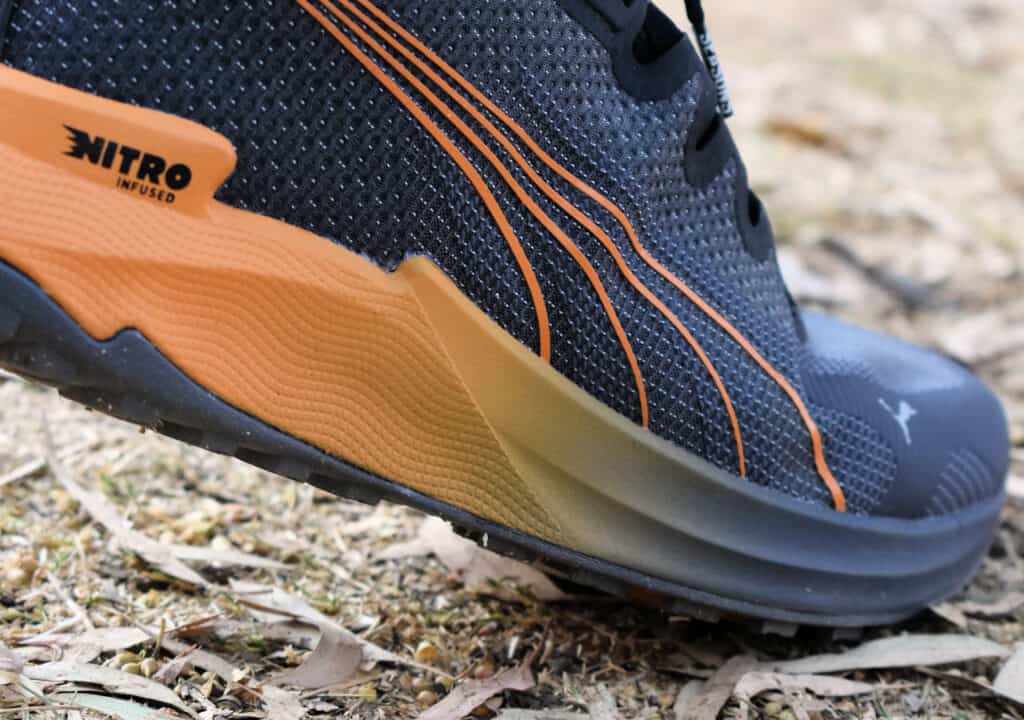
Being an outdoor trail shoe, you shouldn’t expect lesser quality when it comes to materials or builds. PUMA has not taken any shortcuts in this regard with a solid, rugged shoe.
As mentioned previously, the materials used on the upper of the PUMA Fast-Trac Nitro are significantly thicker. Even the mesh upper feels thick and strong. It’s not the typical breathable mesh on many of its other running shoes. Instead, it’s designed to keep water and dust out rather than providing cooling for the feet. Additionally, it can also withstand a lot more scratches from rocks, twigs and the like within your path.
The laces would seem the only section of the sneaker that may be a bit on the frail side. However, it too is protected around the sides lace loops that don’t expose the edges. This means that even with some friction, it should easily wear and snap in those areas. There aren’t any separated eye stays either. The loops are built into the upper without the additional stitching to integrate.
The PUMAGrip ATR rubber is an enhanced version of the standard PUMAGrip material. It’s more robust and grippier overall. This means that you get better traction, as well as robustness when hitting the ground.
There’s a lot to like about the build quality of the PUMA Fast-Trac Nitro. The only aspect I’d be concerned about would be the elastic pull tab on the heel. It doesn’t quite work as a pull tab and is quite stiff for elastic, which I feel may pull out over time if used often.
RELATED: PUMA FUTURE 1.4 Fearless Review
PUMA Fast-Trac Nitro Performance and Flexibility
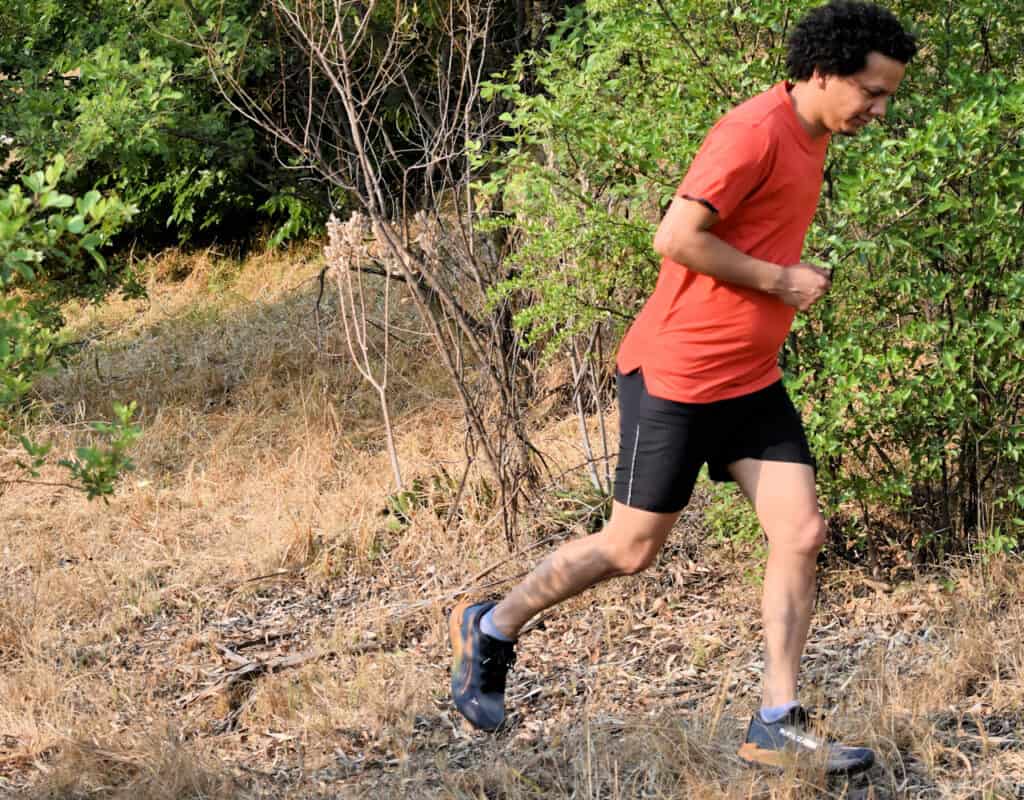
Being a trail shoe, I’ve already covered most of the important aspects of what would make it good. The cushioning, the padding, the premium materials and the durable build are all key aspects of designing an outdoor-compatible shoe. However, there is one small aspect that would take it from an average trail shoe to a good one, perhaps even great – its performance.
The first attribute of the performance is its grip. It’s important to trust the traction underfoot when you’re traversing various terrains. Thankfully, I managed to test out the PUMA Fast-Trac Nitro on quite a few. This included tar, grass, sand and even a bit of bush and rock. The shoe managed to handle all these with ease. I felt comfortable walking through the various trail paths and could even manage a couple of slow runs in between.
The one aspect I wasn’t able to test was traversing those same terrains in rainy weather. While it rained quite often, it was usually overnight, which dried out significantly enough by the morning when attempting the trails. With only a few damp spots, it managed it with ease.
The shoe has been designed to be submerged entirely in water as well. There are a couple of drainage areas within the shoe, allowing water to release from within the shoe. There are two areas on the lateral sides towards the front and back, with the medial side having one just after the mid-section towards the rear. If you want to see where these areas are, you can shine your phone’s torch inside the shoe. These drainage areas are then visible where the light can shine through. The rest of it is all fairly sealed off.
With its less pronounced midsole shape, it’s a lot more stable underfoot. This is important over uneven ground. In conjunction with its lightweight frame, you also won’t tire too quickly because of heavier shoes. As such, it allows for free movement, making it easier to jump across sections without weighing you down too much.
The one aspect that could make for a bit of distrust is the slightly wider heel. As a result, it’s quite important to judge each step. More often than not, you do this by watching your forefoot. So, if you’re cramped for space on a specific step, you may be compromised with the heel. However, this never occurred during any of my trail runs, which had plenty of open areas.
RELATED: PUMA Sono (2006) Concept – The Sneaker Ahead of Its Time
Should You Buy the PUMA Fast-Trac Nitro?
The PUMA Fast-Trac Nitro covers most of the requirements for a well-oiled trail shoe. Grip. Durability. Comfort. Performance. All aspects checked.
The Review
PUMA Fast-Trac Nitro
The PUMA Fast-Trac Nitro is a very reliable, rugged trail shoe. With performance and comfort, you can be assured of the best results when hitting the ground running.
PROS
- Lightweight design
- Rugged build and durable materials
- Padding and Nitro foam cushioning
CONS
- Pull tab doesn’t feel as robust
- Slightly wider rear


